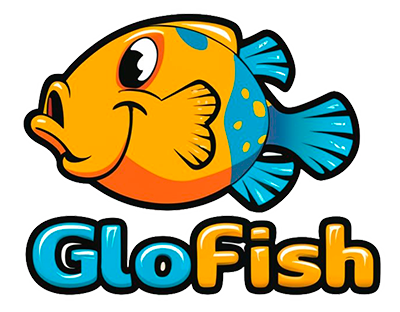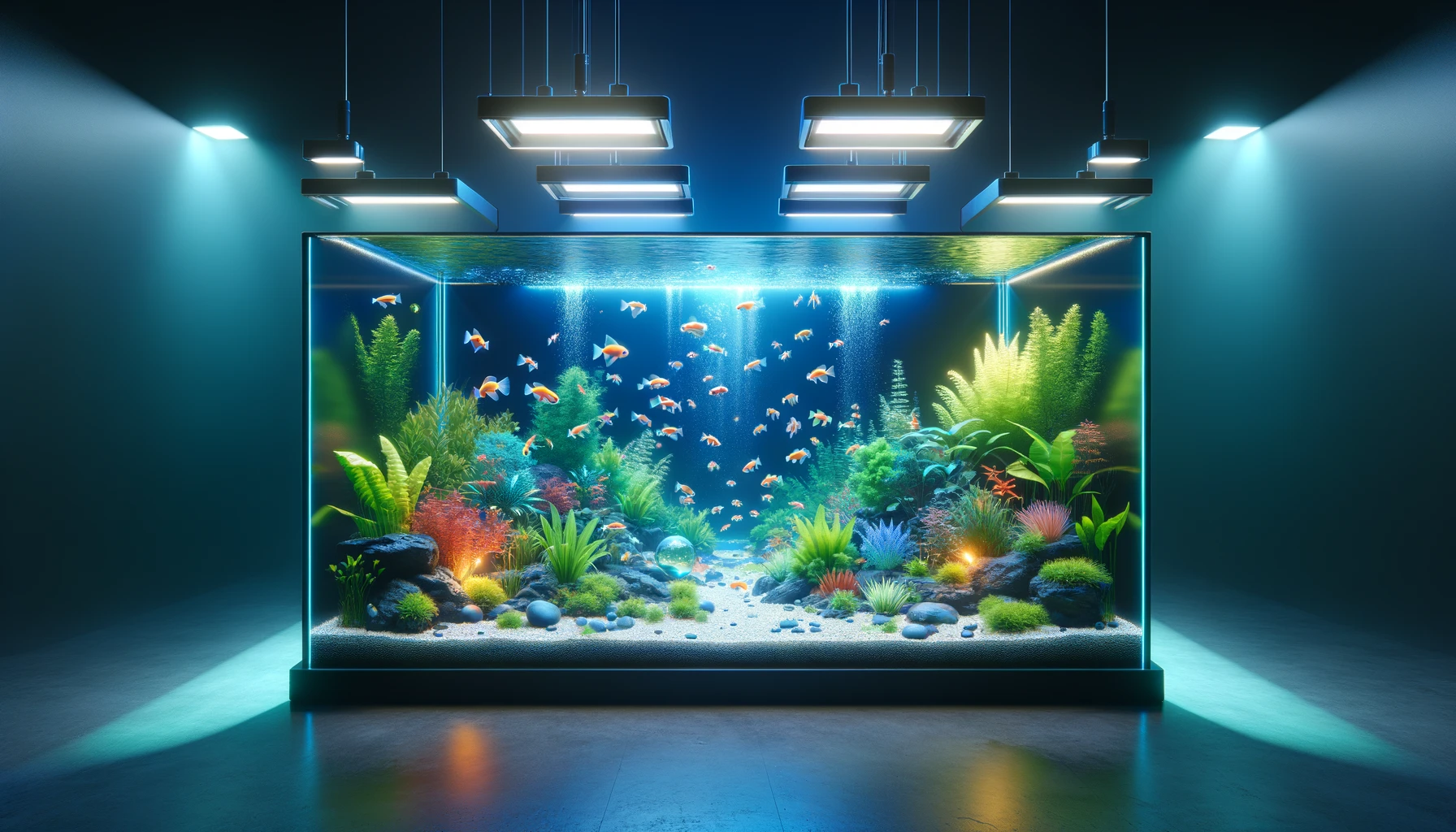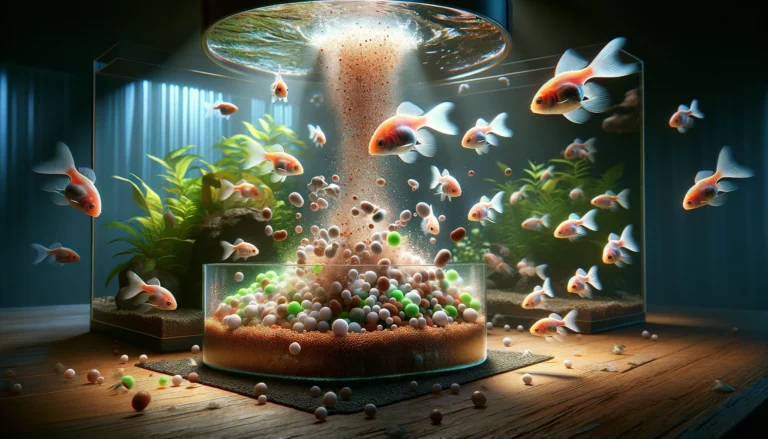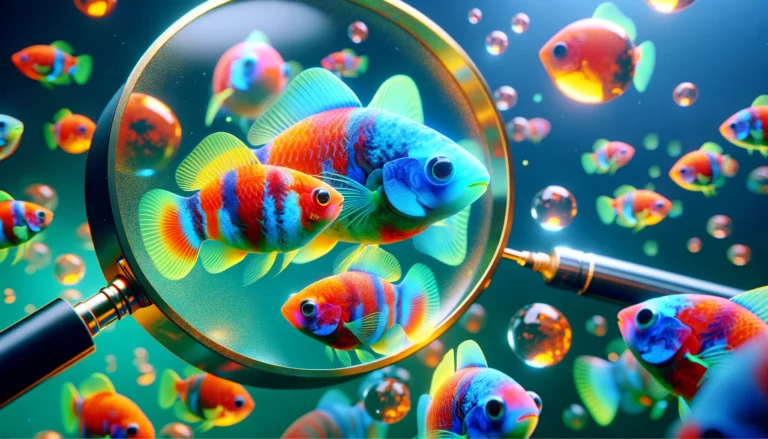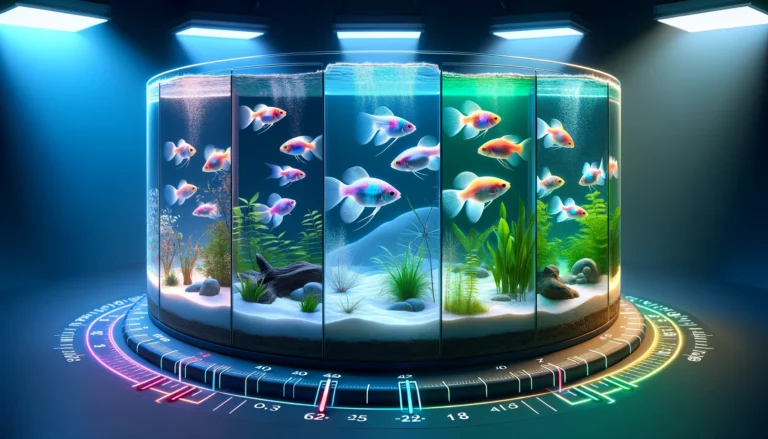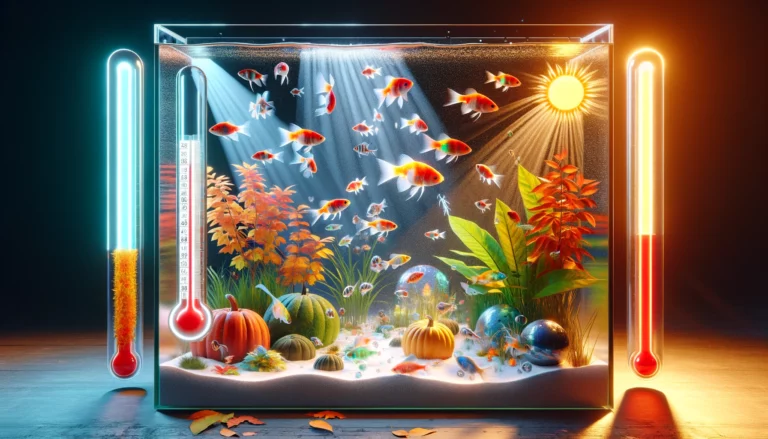Preparing and Installing a Nest for GloFish Eggs
GloFish are not your ordinary aquarium fish. These vibrant creatures light up any tank with their neon glow. Thanks to genetic modifications, they come in bright colors like pink, green, and blue. This makes them a favorite among aquarists seeking to add a splash of color to their aquariums. Originating from species like zebrafish, GloFish were initially created for scientific research. Now, they serve a dual purpose of beautifying home aquariums and being a subject of interest in genetic engineering.
Their popularity doesn’t just stem from their colors. GloFish are hardy and adaptable, making them suitable for beginners. They require similar care to their non-genetically modified counterparts. This includes a proper tank setup, regular feeding, and maintenance of water quality. Aquarists love them for their unique appearance and the ease of care. They can thrive in a variety of tank environments, as long as the conditions are kept within suitable ranges.
To prepare and install a nest for GloFish eggs, ensure a 3-5-gallon water volume per fish. Maintain water temperature between 78°F and 82°F with moderate lighting simulating day and night. Aim for a pH level of 6.5-7.5 and water hardness of 8-12 dGH. Use a 20-30 gallon aquarium with fine gravel or sand substrate at the bottom. Provide a suitable egg-laying site with dense algae, either live or artificial.
The Importance of Proper Nest Preparation and Installation for Successful GloFish Breeding

Breeding GloFish successfully requires more than just putting two fish together. The preparation and installation of a proper nesting area are crucial. A well-prepared nest encourages natural breeding behaviors and provides a safe space for eggs and fry. It mimics the natural environment of their ancestors, promoting health and growth from the start.
The process involves choosing the right tank and setting it up with the ideal conditions for GloFish eggs to develop. This includes maintaining optimal water temperature, pH levels, and lighting. The substrate should be chosen carefully to protect the eggs from being eaten or damaged. Additionally, plants and hiding spots are essential. They offer shelter for the adult fish and a hiding place for fry, increasing their survival rate.
A successful breeding environment doesn’t just happen. It requires thoughtful preparation and careful maintenance. Regular monitoring of water quality and temperature is essential. Adjustments may be needed to keep the conditions ideal for breeding and egg development. Feeding the fish a balanced diet also plays a role in their health and readiness to breed.
Understanding the Breeding Needs of GloFish
Breeding GloFish successfully hinges on understanding their specific needs. These vibrant fish require a conducive environment to reproduce. Creating the right breeding conditions is key to success. This involves more than just placing them in a tank. Temperature, lighting, and water quality play crucial roles in encouraging GloFish to breed and ensuring the health of their offspring.
Description of ideal conditions for GloFish eggs: temperature, lighting, water quality
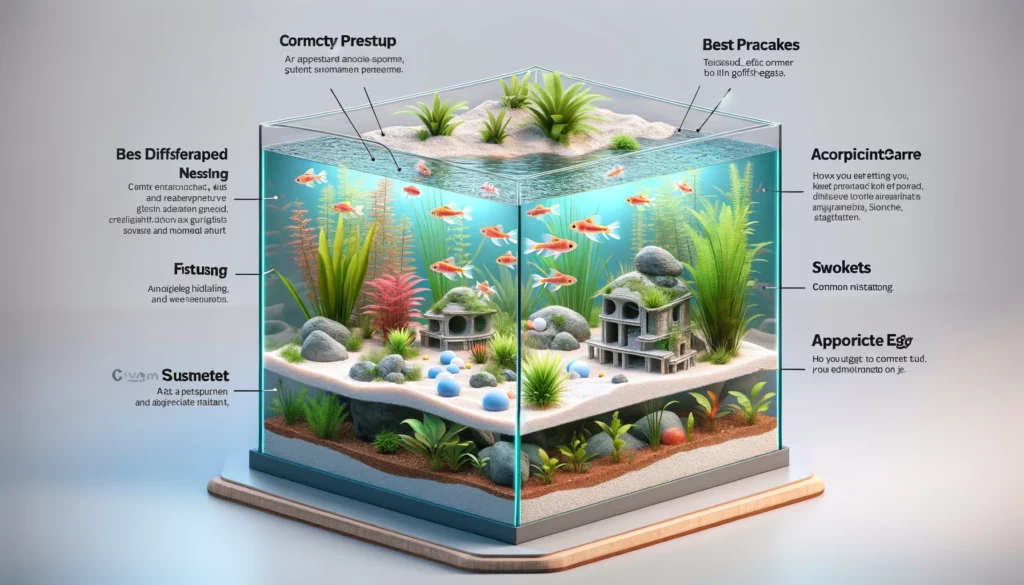
For GloFish, the temperature of the water is critical. It should mimic their natural habitat to stimulate breeding behavior. The ideal temperature range for GloFish breeding is between 78°F and 82°F (25.5°C to 27.8°C). This warm environment encourages them to spawn. Consistency in temperature is also vital. Fluctuations can stress the fish and hinder their reproductive processes.
Lighting is another essential factor. GloFish thrive under moderate lighting conditions. It should replicate the natural light cycle, with periods of darkness to mimic night. This cycle helps regulate their biological rhythms, which are crucial for breeding. Too much light can stress the fish, while too little may not provide enough stimulation for breeding activities.
Water quality cannot be overlooked when breeding GloFish. The water should be clean and well-filtered. Ammonia and nitrite levels must be near zero, with nitrate levels kept low. Regular water changes help maintain these conditions. The pH level should be stable, ideally between 6.5 and 7.5. Proper water quality ensures a healthy environment for both adult GloFish and their eggs.
In summary, successful GloFish breeding requires attention to detail and an understanding of their specific needs. The right temperature, lighting, and water quality create an environment where GloFish can thrive and reproduce. By maintaining these conditions, aquarists can increase their chances of witnessing the birth of new, glowing life in their aquariums.
Choosing the Right Aquarium
Selecting the right aquarium is a critical step in breeding GloFish. The size and type of the tank directly impact the success of breeding and the health of the eggs and fry. It’s not just about providing space for the fish to swim; it’s about creating an environment that closely mimics their natural habitat, promoting healthy breeding behaviors and ensuring the safety and development of the offspring.
For GloFish breeding, a medium-sized tank is often recommended. A 20 to 30-gallon tank provides ample space for GloFish to exhibit natural breeding behaviors without feeling cramped. Space is vital for the health of the fish and the safety of the eggs. In smaller tanks, eggs are more likely to be eaten or damaged. A larger environment reduces stress among the fish, which is crucial for successful breeding.
Tips for setting up an aquarium to create a safe and suitable environment
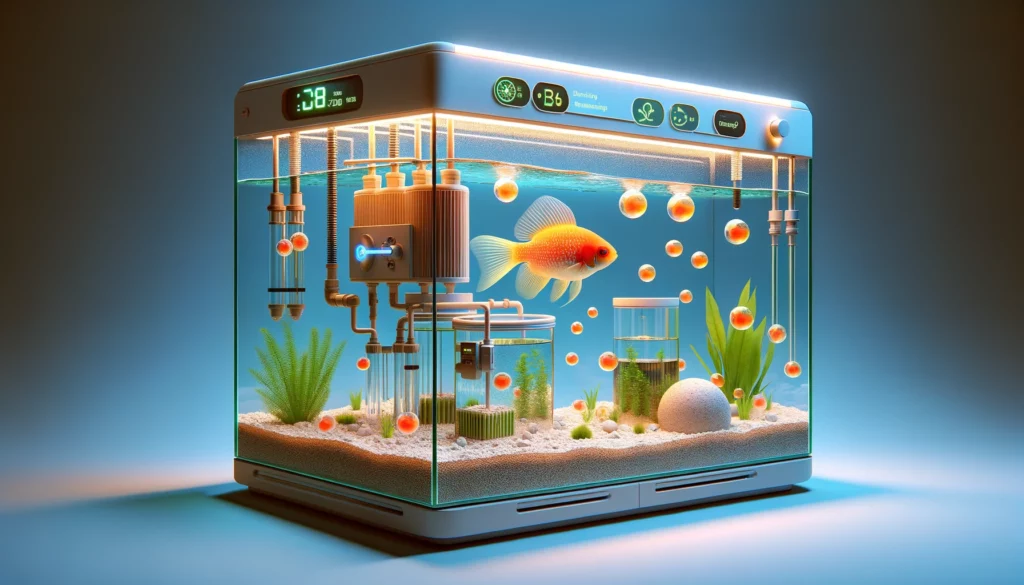
When setting up the breeding aquarium, consider the type of environment GloFish come from. They prefer a tank with plenty of plants and hiding spots. These can be live plants or high-quality artificial ones. The goal is to mimic natural hiding and spawning sites, offering protection for eggs and fry. A soft, dark substrate can also encourage breeding, as it resembles the riverbeds of their natural habitats.
Water filtration is essential, but the current should not be too strong. GloFish eggs and fry are delicate and can be harmed by powerful water movement. Opt for a filtration system that keeps the water clean while providing a gentle flow. This setup will help maintain the optimal water conditions necessary for egg development and fry growth.
In summary, choosing the right aquarium for GloFish breeding involves considering tank size, environment, and filtration. A 20 to 30-gallon tank with plenty of plants and a gentle filtration system creates a conducive breeding environment. By replicating conditions similar to their natural habitat, aquarists can provide a safe and nurturing space for GloFish to breed and for their offspring to grow.
Preparing the Aquarium
Setting up an aquarium for GloFish breeding requires meticulous preparation, especially regarding water conditions and tank environment. Ensuring optimal water quality is the first step towards a successful breeding setup. This involves adjusting and maintaining specific water parameters to create an ideal environment for egg laying and fry development.
Water preparation starts with achieving the correct temperature, pH, and hardness. The water temperature should be maintained between 78°F and 82°F (25.5°C to 27.8°C), ideal for stimulating GloFish to breed. The pH level should be stable, preferably between 6.5 and 7.5, to mimic their natural water conditions. Soft to moderately hard water, with a general hardness (GH) level of around 8 to 12 dGH, is suitable for GloFish eggs and fry. Using a water conditioner to remove chlorine and chloramine is essential for creating a safe environment for the fish.
An overview of suitable aquarium bottom materials to provide a safe place for eggs to be laid
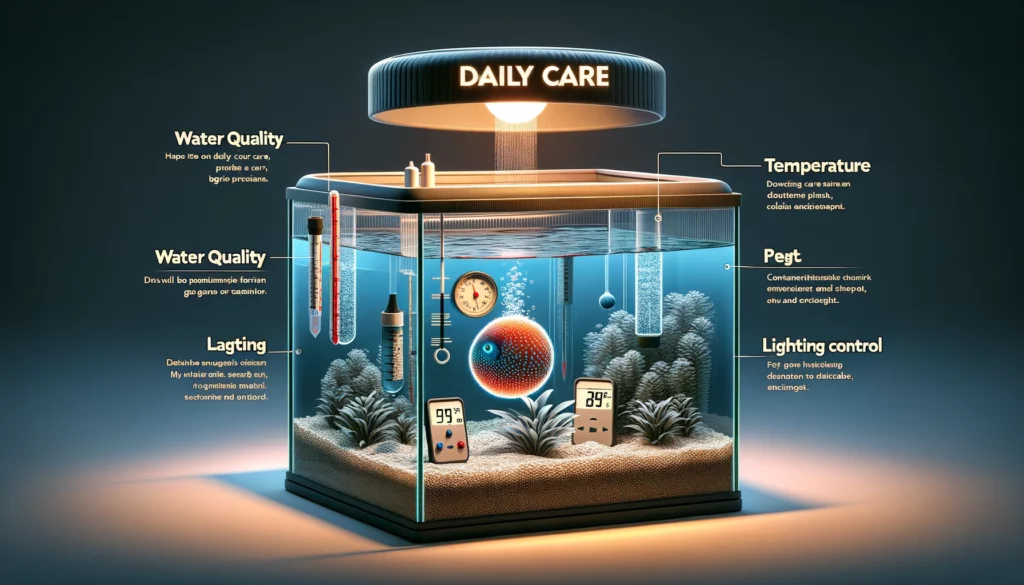
The choice of substrate is crucial for a breeding tank. A fine, dark-colored gravel or sand can provide a comfortable and natural-looking bottom, encouraging GloFish to lay eggs. It’s also gentle on the fry and helps in mimicking the natural riverbeds found in their habitat. Avoid sharp or rough substrates that could harm the fish or their eggs.
Creating hiding spots and planting vegetation are key to replicating a natural breeding environment. Dense plants, both live and artificial, offer shelter and security for GloFish and their offspring. They also serve as natural egg-laying sites. Incorporating broad-leaved plants and soft mosses can enhance the tank’s suitability for breeding. Floating plants help diffuse lighting, creating a subdued environment that is conducive to GloFish breeding activities.
Setting Up a Nest for GloFish Eggs
Establishing a nest for GloFish eggs is a pivotal part of breeding preparation. A well-set nest supports the eggs’ development and boosts the chances of fry survival. This section outlines the best practices for nest installation and highlights common mistakes to avoid, ensuring optimal conditions for GloFish eggs.
The process begins with selecting the right location within the tank. A quiet, secluded area is ideal, away from high traffic and direct light, mimicking the calm, sheltered spots GloFish would choose in the wild. Using breeding mops or fine-leaved plants as a base for the nest can simulate natural egg-laying environments, encouraging GloFish to deposit their eggs there.
A common mistake is neglecting the importance of tank location and environment. Tanks placed in noisy areas or exposed to erratic lighting can stress GloFish, affecting their breeding behavior and egg viability. Ensure the breeding tank is in a stable, calm environment, with lighting that mimics natural day-night cycles to avoid stressing the breeding pair.
Tips for providing optimal conditions for eggs and promoting their successful development
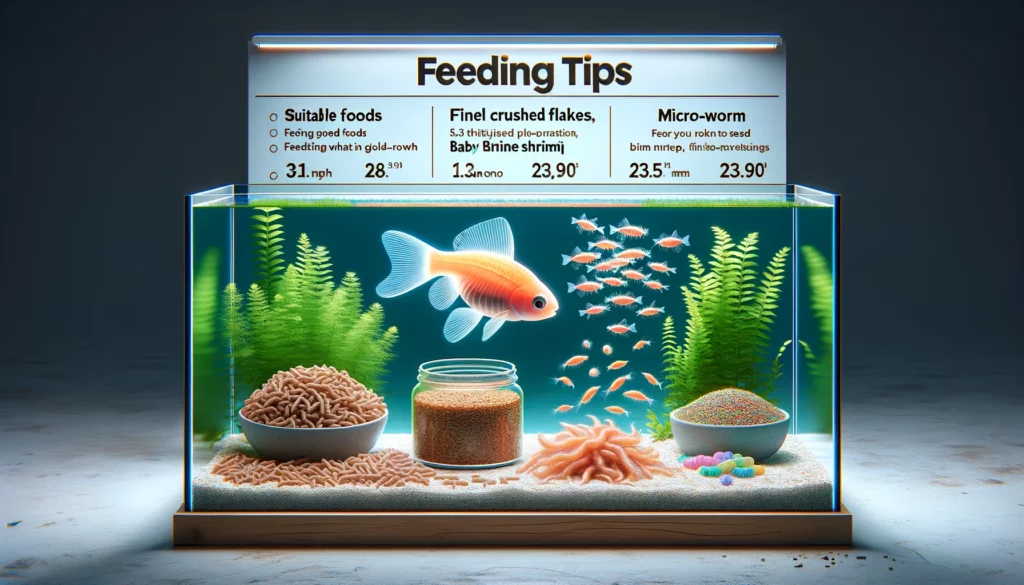
To ensure optimal conditions for egg development, maintain the water quality at high standards. Regular monitoring and adjustments to the water parameters are necessary. Keep the water clean, well-oxygenated, and at a stable temperature and pH level suitable for GloFish eggs. Overlooking water quality can lead to poor egg health and low fry survival rates.
Another tip for success is to gently adjust the water flow in the tank. A gentle flow is beneficial for oxygen distribution but ensure it’s not too strong to wash away or damage the eggs. An overly strong current can prevent GloFish from effectively laying eggs or cause the eggs to be displaced from their nesting area.
In summary, setting up a nest for GloFish eggs requires careful consideration of location, environment, and water conditions. By mimicking natural breeding sites with appropriate plants or breeding mops and maintaining high water quality, aquarists can create a conducive environment for GloFish eggs. Avoiding common pitfalls like neglecting water quality or placing the tank in unsuitable environments is crucial for breeding success.
Caring for GloFish Eggs After Nest Installation
After setting up a nest for GloFish eggs, diligent care is crucial for their development into healthy fry. Regular maintenance of the nest and the surrounding environment ensures the best start for the new generation. This section provides guidance on daily care routines, focusing on water quality, temperature, lighting, and feeding the fry post-hatching.
Maintaining optimal water quality is paramount. Perform daily checks to ensure ammonia and nitrite levels are at zero, and nitrate levels are low. Frequent, small water changes can help manage these parameters without causing drastic shifts in the tank environment, which could stress or harm the eggs and fry. Stability in water conditions is key to fostering a healthy development environment.
Temperature control is another critical aspect. The breeding tank should maintain a consistent temperature within the ideal range of 78°F to 82°F (25.5°C to 27.8°C). This warmth supports the eggs’ development and the fry’s growth. Sudden temperature fluctuations can be detrimental, potentially halting development or leading to health issues in the fry.
Tips for feeding eggs after hatching: how and what to feed GloFish fry
Lighting should mimic natural conditions as closely as possible, with periods of light and darkness. Use a timer to regulate the lighting cycle, providing the eggs and fry with a consistent day-night rhythm. This consistency aids in regulating biological functions and reduces stress, promoting healthier growth.
After the eggs hatch, feeding the fry becomes the next crucial task. Initially, GloFish fry are too small to eat standard fish food. They require a diet of infusoria or commercially available liquid fry food designed for egg-layers. As they grow, they can graduate to micro worms and eventually crushed flake food. Feeding should be small and frequent, ensuring food is accessible without overloading the tank and compromising water quality.
In summary, caring for GloFish eggs and fry involves meticulous attention to water quality, temperature, and lighting, alongside appropriate feeding practices post-hatching. By maintaining stable environmental conditions and providing a suitable diet, aquarists can support the healthy development of GloFish fry, witnessing the emergence of vibrant new life in their aquariums.
Conclusion
Breeding GloFish is a rewarding venture that brings the vibrancy and beauty of these genetically modified fish into sharper focus. The journey from preparing the breeding tank to nurturing the fry underscores the importance of diligence, patience, and a deep understanding of GloFish needs. Proper preparation and installation of a nest for the eggs, coupled with meticulous care, significantly increase the chances of successful breeding and the health of the offspring.
The key takeaways from this guide emphasize the need for a controlled environment that mimics the natural habitat of GloFish, ensuring optimal conditions for breeding, egg laying, and fry development. Attention to details such as tank size, water quality, temperature, lighting, and diet plays a critical role in the breeding process. These elements together create a supportive ecosystem for GloFish to thrive and reproduce successfully.
We encourage aquarists to approach GloFish breeding with a sense of responsibility and commitment. It’s not just about the beauty and novelty of having glowing fish; it’s about understanding the science and care that goes into maintaining healthy aquatic life. By adopting best practices and avoiding common pitfalls, you contribute to the well-being of your GloFish and ensure a vibrant and thriving aquarium.
Let this guide inspire you to embark on the GloFish breeding journey with confidence and enthusiasm. Remember, each step taken with care and respect for the fish’s needs brings you closer to witnessing the miracle of life in your aquarium. The vibrant colors of GloFish are not just a testament to the wonders of genetic modification but also to the dedication and love of aquarists who nurture these fascinating creatures.
